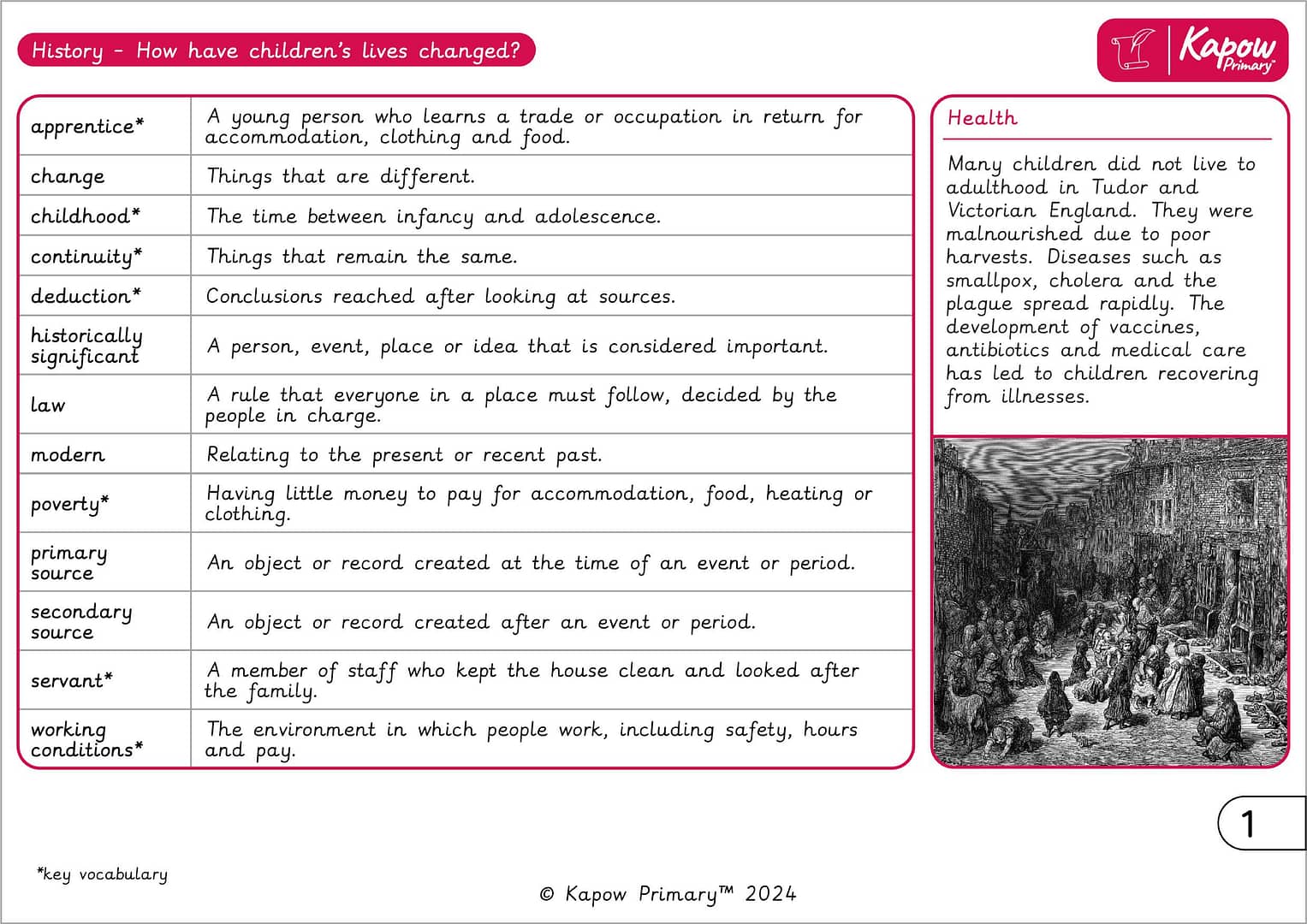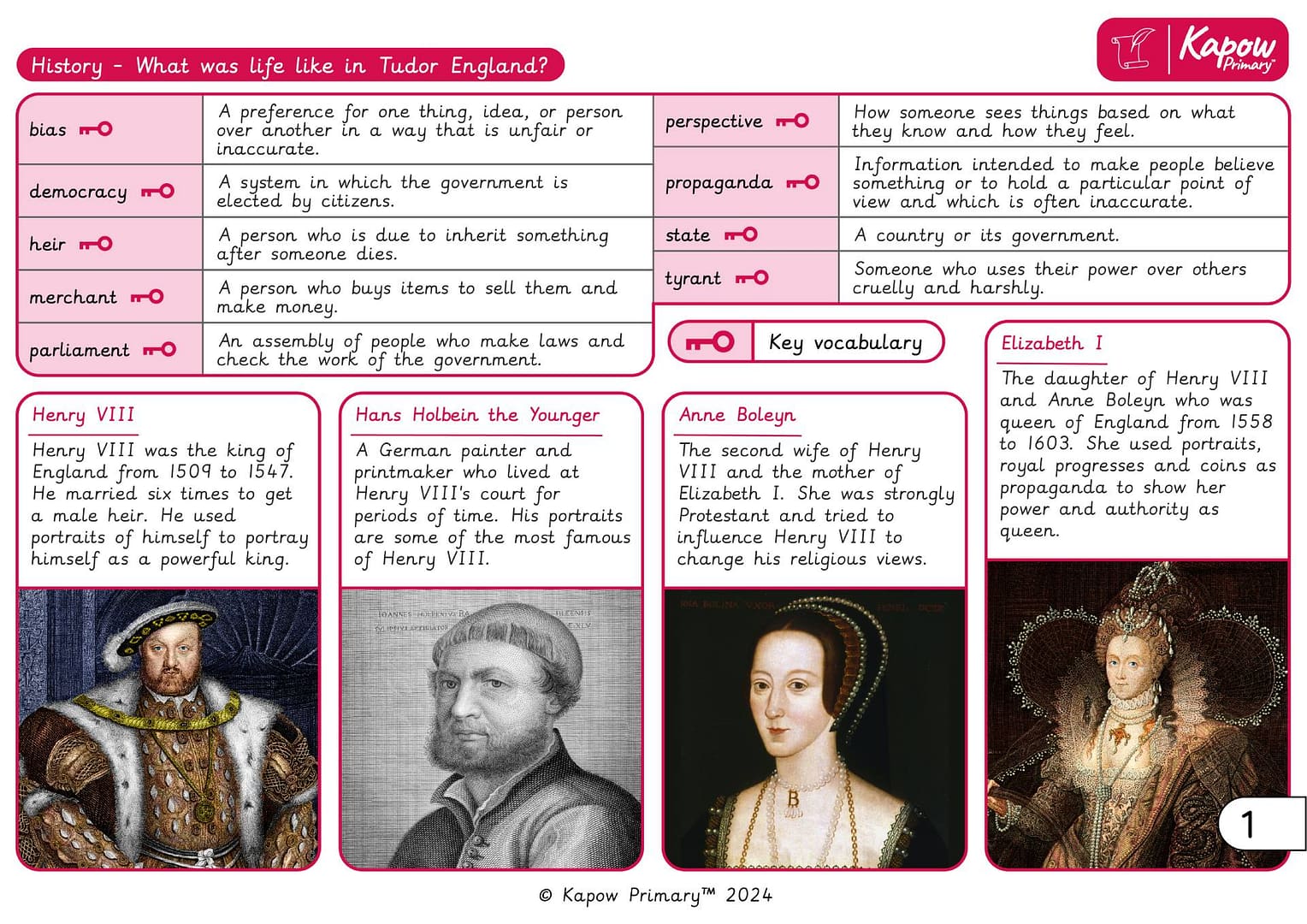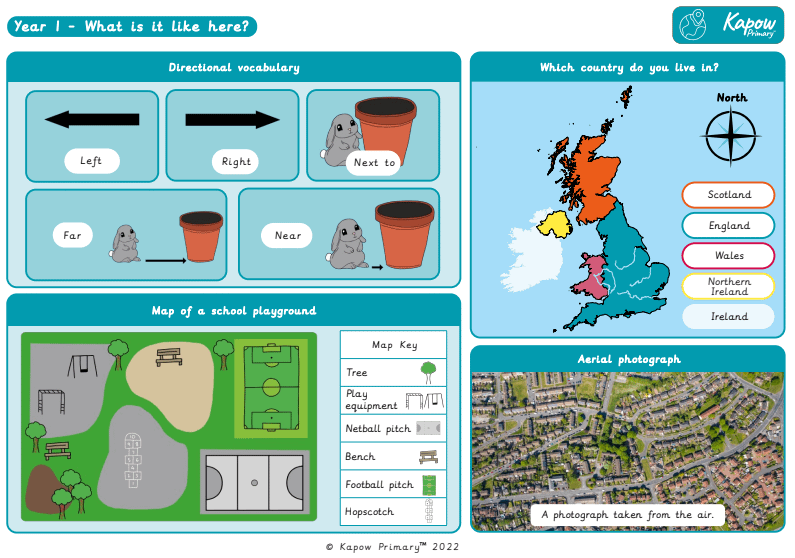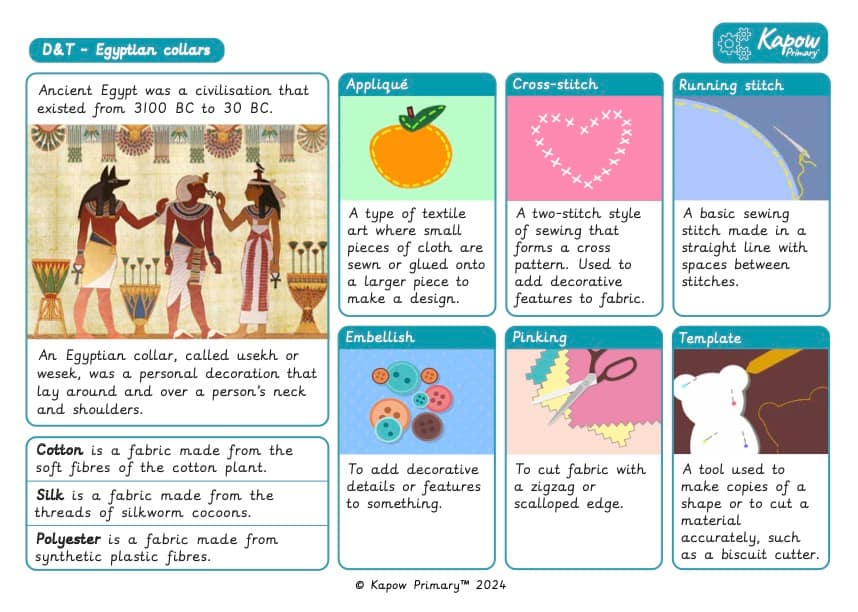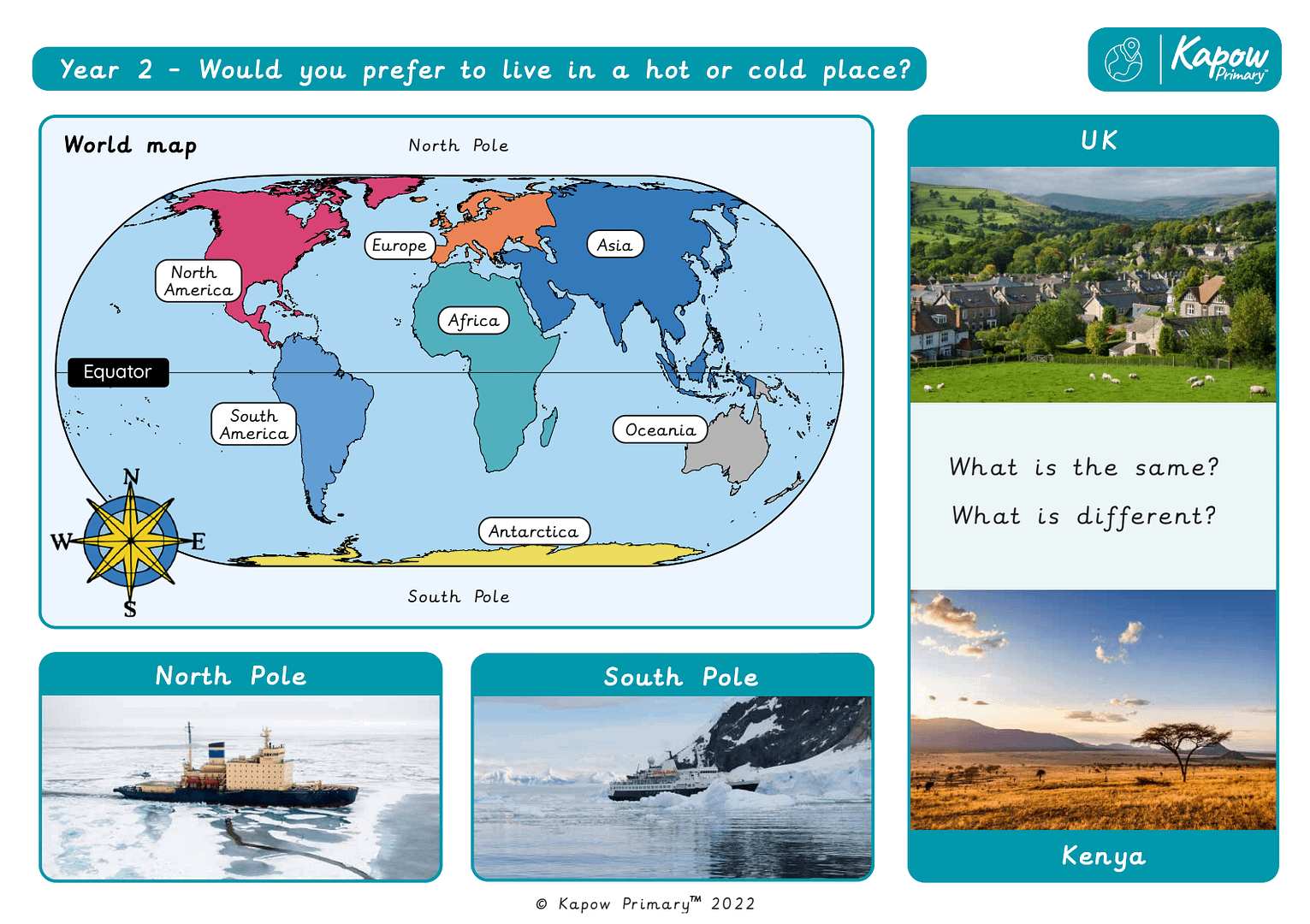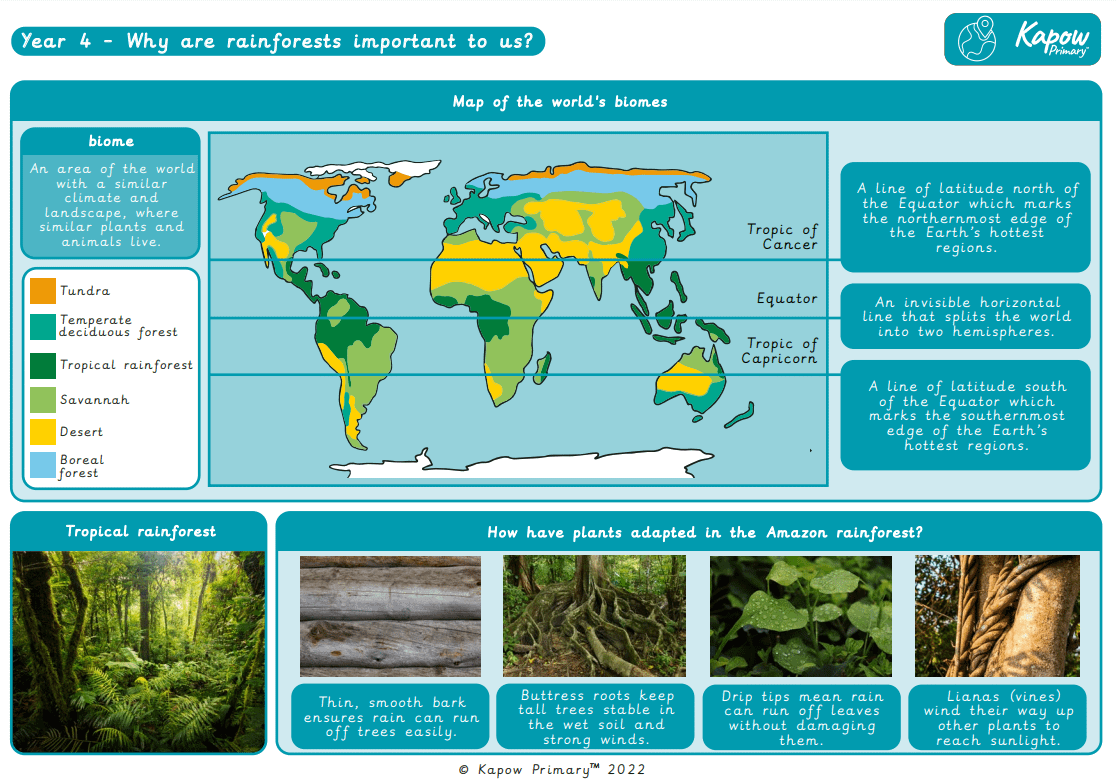Featured Document Type: Knowledge organiser
Knowledge organiser – History Y5: What was life like in Tudor England?
Knowledge organiser: Geography – Y1 What is it like here?
A Knowledge Organiser that captures the essential knowledge and skills learnt throughout the unit Geography, Year 1, What is it like here?
This resource is designed to support pupils as they explore their immediate environment through simple maps, aerial photographs, and directional language. It introduces foundational vocabulary such as left, right, near, and far, and encourages pupils to interpret symbols on a basic playground map using a visual key. Pupils also develop locational awareness by identifying the country they live in on a colour-coded map of the UK. The unit lays the groundwork for early geographical thinking by helping pupils describe and navigate their surroundings with confidence.
Knowledge organiser: DT – Y3 Egyptian collars
A Knowledge Organiser that captures the essential knowledge and skills learnt throughout the unit Design and Technology, Year 3, Textiles: Egyptian collars.
This resource is designed to support pupils as they explore the cultural significance and textile techniques behind ancient Egyptian decorative collars. It introduces key terminology such as appliqué, cross-stitch, running stitch, and embellish, alongside practical tools and methods like pinking and using templates for accurate design work. Pupils also gain an understanding of different fabrics—cotton, silk, and polyester—as they experiment with materials and create their own versions of usekh or wesek collars. The unit combines historical context with hands-on design, encouraging creativity through craft.
Knowledge organiser: Geography – Y2 Would you prefer to live in a hot or cold place?
A Knowledge Organiser that captures the essential knowledge and skills learnt throughout the unit Geography, Year 2, Would you prefer to live in a hot or cold place?
This resource is designed to support pupils as they compare the physical and human features of hot and cold climates around the world. It introduces global locational knowledge through a world map showing the equator, continents, and poles, while encouraging pupils to explore similarities and differences between places such as the UK, Kenya, the North Pole, and the South Pole. Pupils consider how temperature, environment, and lifestyle vary across regions, building their understanding of geography through observation, comparison, and enquiry.
Knowledge organiser: Geography – Y4 Why are rainforests important to us?
A Knowledge Organiser that captures the essential knowledge and skills learnt throughout the unit Geography, Year 4, Why are rainforests important to us?
This resource is designed to support pupils as they explore the significance of rainforests, particularly the Amazon, and the global impact of human activity on these ecosystems. It introduces essential vocabulary such as biome, deforestation, canopy, global warming, and logging, and explains how plants have adapted to survive in the rainforest environment. Pupils learn about the different layers of the rainforest, from the forest floor to the emergent layer, and examine the effects of threats such as mining and tree felling. The unit helps pupils develop an understanding of environmental interdependence and the importance of sustainable practices.
Knowledge organiser: Geography – Y3 Why do people live near volcanoes?
A Knowledge Organiser that captures the essential knowledge and skills learnt throughout the unit Geography, Year 3, Why do people live near volcanoes?
This resource is designed to support pupils as they investigate the geographical processes behind volcanic activity and why communities choose to settle near these natural features. It introduces key vocabulary such as tectonic plates, magma, shield volcano, and composite volcano, while explaining the structure of the Earth and the different types of volcanic eruptions. Pupils explore the risks posed by living near volcanoes, including eruptions and earthquakes, alongside the benefits such as fertile soils, geothermal energy, and tourism. This unit strengthens pupils’ locational knowledge and deepens their understanding of the relationship between people and their environments.
Knowledge organiser – History Y1: How am I making history?
A Knowledge organiser that captures the essential knowledge and skills learnt throughout the unit History, Year 1, How Am I Making History?
This History resource is designed to support the pupils as they explore personal history and how their experiences contribute to the past. It introduces key vocabulary such as past, present, timeline, memory, and family, helping the pupils understand how events in their lives shape history. The pupils will also learn how to sequence events chronologically and recognise the importance of personal and family history.

